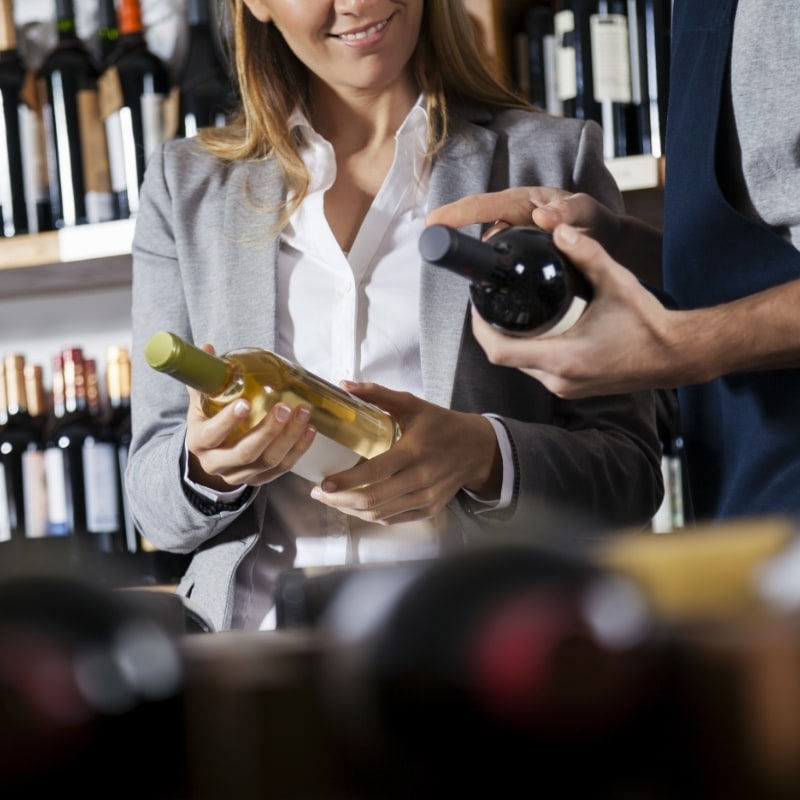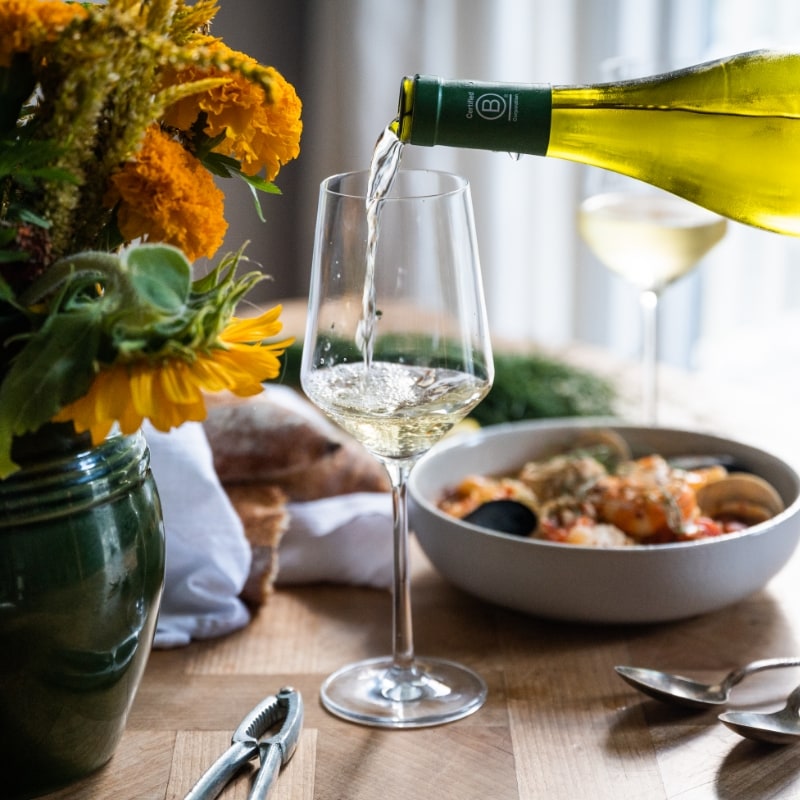There are over 100 grape varieties grown in California, from Zinfandel to Chardonnay to Pinot Noir. Here you will find comprehensive profiles on these grape varieties: how and where they are grown, what happens at the winery and what to expect from the finished wines.
Enjoying a glass of California wine is easy to do, but there are a few tips that are sure to enhance your experience.
Choosing a Bottle
There are three simple ways to chose a bottle of wine:
Go with what you know
There’s nothing wrong with buying another bottle of a beloved wine. You know you’ll enjoy it, and if you’re entertaining, you know your guests will, too.
Live a little
California has so much variety that it’s easy to find a new favorite wine. Start with a wine you like and try it from a different California region, or start with your favorite region and try a new variety or blend.
Ask for help
Develop a relationship with a retail shop that specialize in California wine. A knowledgeable retailer or wine section specialist who knows your taste and price range can guide you to some great bottles.
Tasting Tips
Wine tasting is a sensory experience. That’s why we use the four S’s as our guide: see, swirl, sniff and sip.
See the color and clarity of the wine as you regard it in the glass.
Swirl the wine in the glass to release the distinctive aroma of the grape variety.
Sniff the wine by bringing the glass to your nose. The nose makes literally thousands of discriminations. Try describing the aromas to your friends.
Sip the wine and hold it in your mouth. Gently draw air through your teeth to direct aromas to the nasal passages. Note any tartness or sweetness. Four sensations – sweet, sour, bitterness and salt – are all perceived through taste. Temperature, tannins (astringency) and the effervescence (bubbles) of sparkling wines are also experienced through the sense of touch in the mouth. Notice the texture, flavour and how it feels in your mouth. And don’t be afraid to spit!
Serving
Are you serving your wines at the right temperature? Here are some tips:
Sparkling Wines
Traditionally chilled to 45°F (7°C) or lower to slow the release of bubbles and encourage the fruit aromas to linger.
White and Rosé Wines
Taste best chilled 45°F to 55°F (7° to 13°C), but not too cold. When wine is too cold, its aromas and flavors are harder to enjoy.
Red Wines
Reveal their richness when served at cooler room temperatures of 55° to 60 °F (13° to 16°C). Room temperatures higher than this are a little too warm.
Capstone California
A Comprehensive Study of California Wine
Presented by Wine Institute
The program offers four levels of study, from novice to expert. Each builds on the level prior, and covers history, lore, geography, climate, soils, grapes, viticulture, vinification, aging and maturation, wine laws, official classifications, producers, vintages and the business of wine.
Spring
Spring in California wine country is full of the promise of pleasures to come. Grapevines have begun to wake from their long winter slumber. In early March, new buds burst open and push tiny green shoots into the mild spring sunlight, signaling budbreak. This is the exciting start of the annual grape growing season.
Summer
Summer here is pleasantly warm and clear, with morning fog giving way to cloudless blue skies and boundless sunshine. By June, grape clusters have appeared on the vines, and the foliage of the leafy canopy reaches toward the sky, sprawling out in all directions. Abundant sunlight gives the grapes the warmth they need.
Fall
It’s harvest time! Grape clusters hang heavy on the vines, bursting with flavor. Winemakers check and re-check sugar levels in the juice, anticipating just the right balance that will signal the start of picking. Grapes are often harvested during the early morning hours, before the day heats up.
Winter
Winter means rest in wine country: the wines rest in tanks and barrels, and winemakers take a deep breath. Rains return to refresh and replenish the long, dry summer season, and the vines’ leaves display the fall colors of gold, orange and crimson. The air has turned chilly and cooler temperatures are the norm.
Spring
Spring in California wine country is full of the promise of pleasures to come. Grapevines have begun to wake from their long winter slumber. In early March, new buds burst open and push tiny green shoots into the mild spring sunlight, signaling budbreak. This is the exciting start of the annual grape growing season.
Summer
Summer here is pleasantly warm and clear, with morning fog giving way to cloudless blue skies and boundless sunshine. By June, grape clusters have appeared on the vines, and the foliage of the leafy canopy reaches toward the sky, sprawling out in all directions. Abundant sunlight gives the grapes the warmth they need.
Fall
It’s harvest time! Grape clusters hang heavy on the vines, bursting with flavor. Winemakers check and re-check sugar levels in the juice, anticipating just the right balance that will signal the start of picking. Grapes are often harvested during the early morning hours, before the day heats up.
Winter
Winter means rest in wine country: the wines rest in tanks and barrels, and winemakers take a deep breath. Rains return to refresh and replenish the long, dry summer season, and the vines’ leaves display the fall colors of gold, orange and crimson. The air has turned chilly and cooler temperatures are the norm.


